ABOUT THE EOS VR SYSYTEM
WHAT YOU NEED
Lens
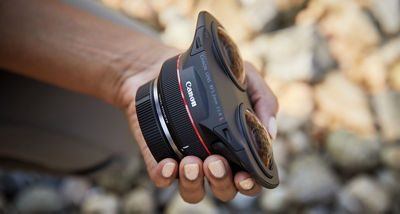
RF5.2mm F2.8 L Dual Fisheye Lens
With a beautifully engineered folded optical design, the dual high-performance L-series fisheye lenses combine imagery onto a single image sensor delivering impressive results to a single file.
Camera
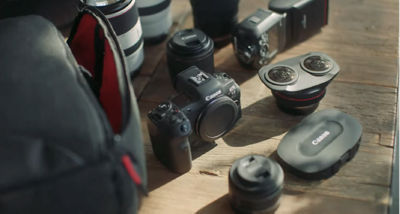
EOS R5 C
Unlock your creative potential with the EOS R5 C, a full frame hybrid camera that expertly combines features from the Cinema EOS lineup with the distinguished still-imaging capabilities of the EOS R system.
EOS R5
The EOS R5 builds off of the powerful legacy of Canon's full frame cameras offering next generation refinements in image quality, performance and reliability.
EOS R6 Mark II
The EOS R6 Mark II full-frame camera enables various hybrid features for still and movie shooting.
Software
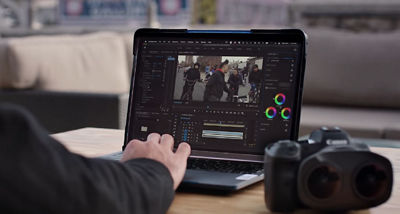
EOS VR Utility
Canon’s EOS VR Utility is a standalone software application. This paid subscription software (available with a free trial) converts the recorded dual fisheye image to equirectangular imagery. In addition to minor editing and trimming, you can also process and export your file to various resolutions and formats so they can be viewed in compatible Head Mount Displays.
EOS VR Plug-in for Adobe Premiere Pro
This paid subscription plug-in (available with a free trial) converts your files to equirectangular upon importing into your project. From there, you can use all the functions available to you within Adobe Premiere Pro including cutting, trimming, color correction, exporting and more. This plug-in solution allows for working with your files without ever leaving Adobe Premiere Pro.
*The Plug-in does not natively convert RAW files at this time.
SHOOTING WITH THE EOS VR SYSTEM

The Basics of Filming Stereoscopic 3D 180° VR
New to shoooting stereoscopic 3D 180° VR or simply want to know the ins and outs of Canon's revolutionary RF5.2mm F2.8 L Dual Fisheye lens? This video will get you started.

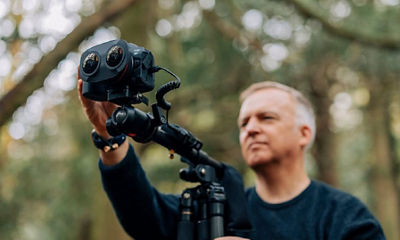
Field of View
The RF5.2mm F2.8 L Dual Fisheye has a 190° field of view and an interpupillary distance of 60mm.
Resolution and Frame Rates
The EOS R5 and EOS R5C cameras, when paired with the RF5.2mm F2.8 L Dual Fisheye, allow for recordings at up to 8K DCI equivalent resolution at 30fps or 60fps. The EOS R6 Mark II allows for recordings in 4K at 30fps.
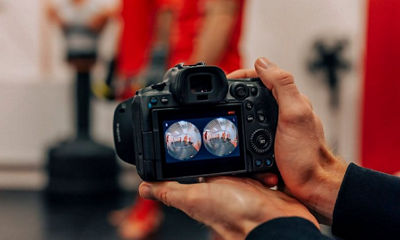
Magic window
This compositional aid shows the central resting position of your image and an approximate view of what your viewer will see. The approximate horizontal angle of view is 100°.
Focus aids
The focus band on the RF5.2mm F2.8 L Dual Fisheye barrel adjusts the focus of both left and right optical systems simultaneously. It is recommended to focus the left lens first. For situations when the left lens is sharp, but the right lens needs refinement, a separate Left-Right Focus Difference Dial is provided to adjust focus of the right lens only, using the provided 1.5mm hexagon wrench.
The EOS R5 C, EOS R5, and EOS R6 Mark II cameras feature a Manual Focus Peaking setting which provides a color overlay to your focus field to assist in obtaining the sharpest image possible.
Magnification can be helpful to achieve sharp focus. Once magnified, pressing the "Info" button will swap from the left to right eye.
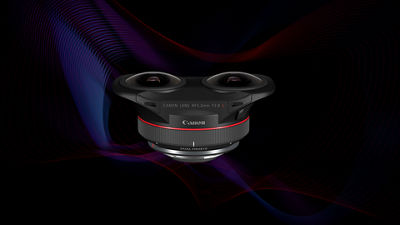
ACCESSORIES AND APPLICATIONS
PD-E1
The PD-E1 USB Power Adapter facilitates charging the battery while it is inside the camera and connects via a USB Type-C cable. Compatible cameras include the EOS R5 C, XA65/60, XA75/70, and VIXIA HF G70.
DR-E6/E6 C
The DR-E6C is designed for use with the EOS R5 C and is required for the camera to operate when in “Video” mode*. The coupler connects to external power supplies, such as the CA-946 Compact AC adapter, to deliver power directly to the camera without a battery. (Please note that the DC Coupler DR-E6 will only supply power to the EOS R5 C when in “Photo” mode.)
Camera Connect
Camera Connect is an app that allows you to connect and control your camera from a compatible smartphone or tablet, delivering features, functions, and essential information to enhance your creative vision.
EDITING WITH THE EOS VR SYSTEM
Editing Stereoscopic 3D 180° VR with ButcherBird Studios
Join Steven Calcote of Butcher Bird Studios as he walks us through his post-production workflow.

SOFTWARE
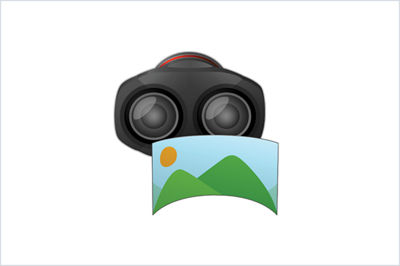
EOS VR Utility
Canon’s EOS VR Utility makes conversion of stereoscopic footage and stills for editing and playback a much more efficient process.
Version 1.3
- RAW video support, including 60fps with 8K / 60P RAW LT (EOS R5 C)
- GPU acceleration support (NVIDIA for Windows / Metal for Mac)
- Apple silicon support
- Additional Export file format (Windows)
- Lens mask option
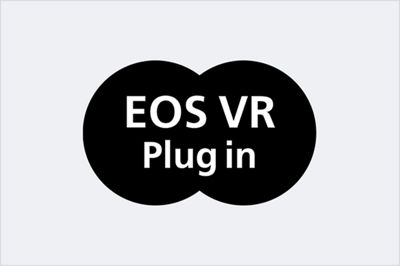
EOS VR Plug-in for Adobe Premiere Pro
The EOS VR Plug-in for Adobe Premiere Pro enables content creators to convert and edit directly from their NLE application and perform specialist tasks such as grading, and editing.
Version 1.3
- GPU acceleration support (NVIDIA for Windows / Metal for Mac)
- Apple silicon support
- Lens mask option

Subscription Info
All users can enjoy a free trial period and perform conversions of still images and videos shorter than two minutes. However, when exporting videos of two minutes or longer with EOS VR Utility, or importing with EOS VR Plug-in for Adobe Premiere Pro, a paid for subscription is required.
EOS VR SYSTEM COMPATIBILITY
TIPS AND TRICKS
Cinematic Storytelling in 180° VR
Immerse your audience in captivating stories with the power of stereoscopic 3D 180° virtual reality. As a proud sponsor of the 2022 Sundance Film Festival and New Frontier Alliance, Canon brings you this workshop from Matt Celia (Light Sail VR) that will excite filmmakers about the possibilities of immersive entertainment. Learn creative techniques and technical tips Celia has developed through his work on 70+ VR projects.

EOS VR SYSTEM FAQS
By being equipped with TWO separate optical systems, the RF5.2mm F2.8 L Dual Fisheye lens can capture two different images (Left and Right) onto a single image sensor. The 60mm spacing between these two optical systems provides a “side-by-side” stereoscopic image with similar parallax to human vision, producing a realistic, familiar, and comfortable stereoscopic image. When viewing the fully processed image in a compatible VR Head Mount Display, users can experience a 3D stereoscopic 180° VR immersion. It should be noted that Head Mount displays typically require a single image file that drives two screens in the headset (Left and Right eye pieces), so by having a side-by-side stereoscopic image captured on the single image sensor from the start it can help speed up workflow substantially versus the need to use custom camera rigs or multiple cameras.
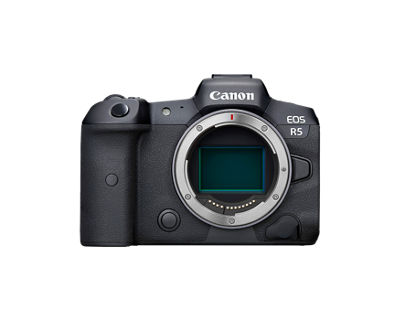
The EOS R5 camera equipped with Firmware Version 1.5.0 or later is supported.
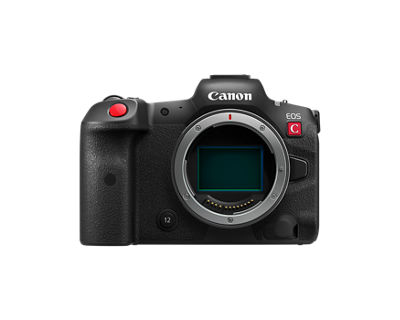
The EOS R5C is supported.
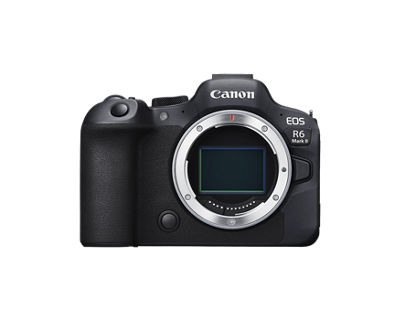
The EOS R6 Mark II equipped with firmware version 1.2.0 or later is supported.
The RF5.2mm F2.8 L Dual Fisheye lens gives the EOS R5, EOS R5 C and EOS R6 Mark II cameras the ability to capture an immersive stereoscopic 3D experience. With stereoscopic 3D 180° VR, a vivid environment can wrap around your viewer, allowing them to see beyond their initial field of view (resting position)— and when they move their head up, down, left, or right while wearing a compatible headset they can see a much wider total field of view captured by the lens. While other head mount displays may work, currently only Oculus Quest 2 and Pico G2 (in movie mode only) head mount displays are tested and compatible with files from EOS R5 and EOS R5C cameras in 8K and with the EOS R6 Mark II,4K 60p and RF5.2mm F2.8 L Dual Fisheye lens.
The use of 2-dimensional devices such as monitors, tablets, smartphones and projectors will not render an image capable of being viewed in 3D as they are seen as “flat” images. The viewing experience in 2D can allow for scrolling around the VR image using your finger, pointer device or turning your device when using a smartphone or tablet.
After using an EOS VR Software solution to convert the 8K DCI resolution (8192x4320) image to equirectangular, the exported image can be output as one of the following 2:1 ratio resolutions: 8192x4096, 6144x3072, 5760x2880, or 4096x2048. At these output resolutions, the per eye diameter of each would be 4096x4096, 3072x3072, 2880x2880, and 2048x2048.
With the 4K UHD resolution (3840x2160), the exported image options are 4096x2048. At these resolutions, the per eye diameter are 2048x2048.
Please note, the "viewed image" in headset is dependent on the resolution capability of that head mounted device.
Yes, it is possible. It is recommended to record files which are either 8K DCI or 4K DCI in resolution to achieve the widest frame possible using the EOS R5 or EOS R5 C.
When using the EOS R6 Mark II, the optimal recording resolution is 4K UHD 60P or 30P.
The RF5.2mm F2.8 L Dual Fisheye is a Manual Focus operation only lens. You can utilize the Focus band on the lens barrel to adjust the focus of both Left and Right optical systems simultaneously. It is recommended to focus for the left lens first. For situations when the left lens is sharp, but the right lens needs refinement, a separate Left-Right Focus Difference Dial is provided to adjust focus of the Right lens only, using the provided 1.5mm hexagon wrench.
The magic window that is seen inside of the image circle is a compositional aid to make you aware of the central resting position of your image and an approximate view of what your viewer sees first when wearing a head mounted display or watching VR content with a smartphone or computer. The approximate horizontal angle of view is 100°.
For the best perception of depth, it is recommended that your subjects be within 1.64 feet – 4.92 feet from your camera. When shooting distant subjects such as a landscape, or an arena for example, a foreground element should be considered as a compositional element.
Although it is possible to handhold the camera and lens, there are several things you should consider:
- When viewing content created using EOS VR System with a compatible head mounted display, camera shake, and certain movements can be very disorienting to the viewer.
- In-body Image Stabilizer is disabled when using this lens.
- This lens does not have built in Optical Image Stabilizer.
- A great starting point to keep the camera as still as possible to avoid camera shake is the use of a tripod. It is also recommended to extend the camera away from the tripod with the use of a horizonal center column system to avoid the lens from capturing the legs of the tripod as well.
While the use of Canon’s dedicated software is not a requirement, it is HIGHLY recommended for most VR creators. The basic workflow of the Canon VR system is:
- Capture your footage with a compatible camera , which is currently the EOS R5C, EOS R5 (firmware 1.5.0+), or EOS R6 Mark II (firmware 1.2.0+),camera.
- For the highest compatible image-quality utilizing 8K DCI 29.97p ALL-I with Canon Log, or Canon Log 3 enabled is recommended, however processing speeds will vary based on the user’s computing power. If faster processing speeds are desired, recording with a 4K DCI resolution video at IPB or IPB Light quality can be a solution to consider. Overall, depending on the nature of the content being filmed, there are situations where 59.94p may be desired and it is available at 4K DCI resolution. High-frame rate 119.88p video is also available at 4K DCI resolution however it should be noted that audio is not recorded with this framerate. Please note, HDR PQ is disabled with this lens.
- When using the EOS R6 Mark II camera (firmware 1.2.0+), the image quality is either 4K UHD 60P and 30P.
- After recording, the files are brought into either the Canon EOS VR Utility application or into Adobe Premiere Pro with the Canon EOS VR Plug-in installed. Download of the Software and still image processing are free, but use of the Software to process movie clips exceeding 2:00 minutes in length requires a paid subscription.
- If using EOS VR Utility, choose if you are working with Stills or Movies then open the folder on your computer where your VR files are saved. After choosing a file, a corrected equirectangular image is displayed. You can now choose clip start and end points, adjust parallax and horizontal correction, apply a LUT, preview the conversion, as well as export the clip to multiple file types and if recording in 8K, the choice of various resolutions are available.
- If using the EOS VR Plug-in for Adobe Premiere, simply import the file into your project. The file will automatically convert to equirectangular. Then, drag it into your sequence. From here, you can edit and grade your timeline like any other video.
Yes, at this time it is possible to process JPEG Still images with use of EOS VR Software solutions created by RF5.2mm F2.8 L Dual Fisheye lens and EOS R5 C, EOS R5 (firmware 1.5.0+), and EOS R6 Mark II (firmware 1.2.0+) cameras.
Editing in RAW is possible with the EOS VR Utility application, but the EOS VR Plugin does not support video RAW or RAW Light files.


